In pictures: India's e-waste village
- Published
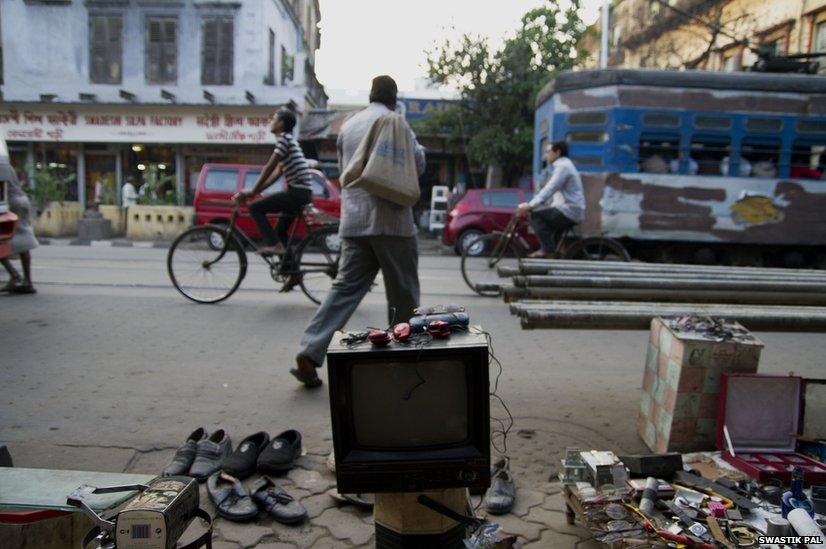
In the eastern Indian city of Calcutta, thousands of tonnes of e-waste or electronic waste is collected annually by neighbourhood waste dealers, who go around with sacks on their shoulders. (Photos: Swastik Pal)
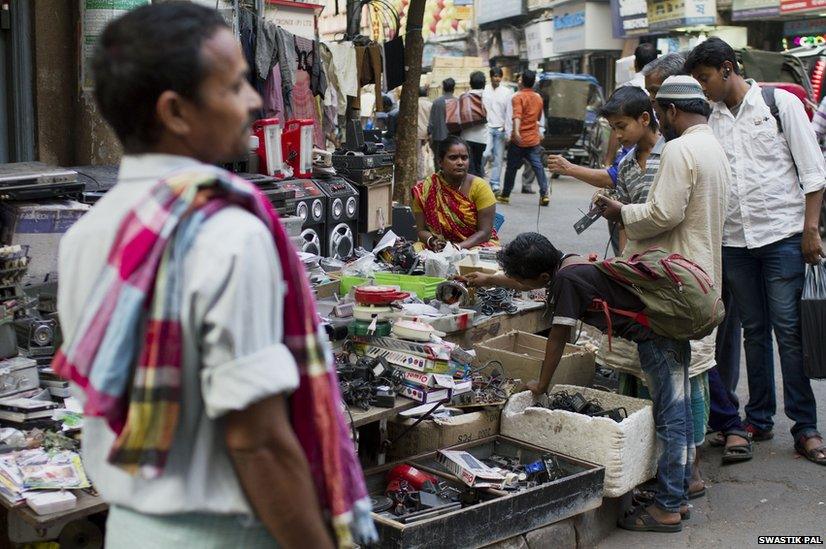
The discarded electronics are dismantled and parts of it are extracted and sold at roadside shops in Calcutta. At the city's Chandni Chowk area, a hugely popular second-hand market, people can buy wires to wi-fi routers, or even a discarded video camera.
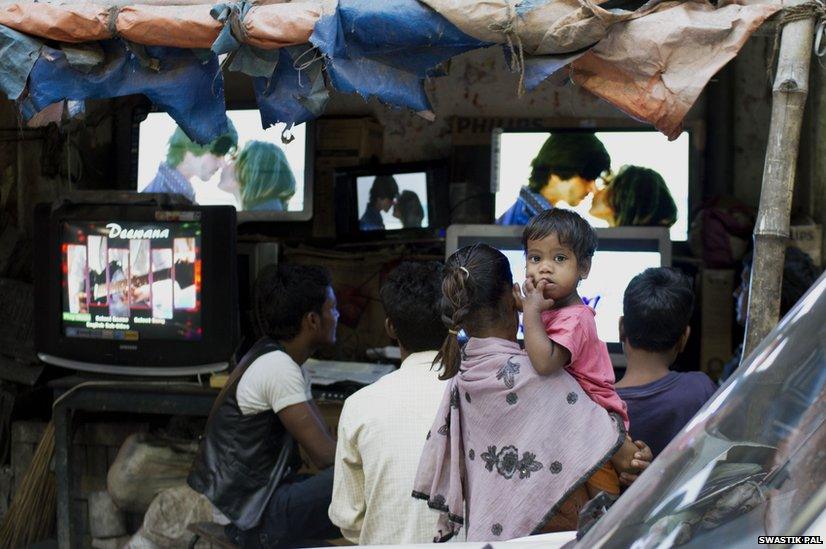
It is also a common practice to use the discarded picture tubes from computer monitors to make low-cost, locally assembled television sets which are then sold in Chandni Chowk.
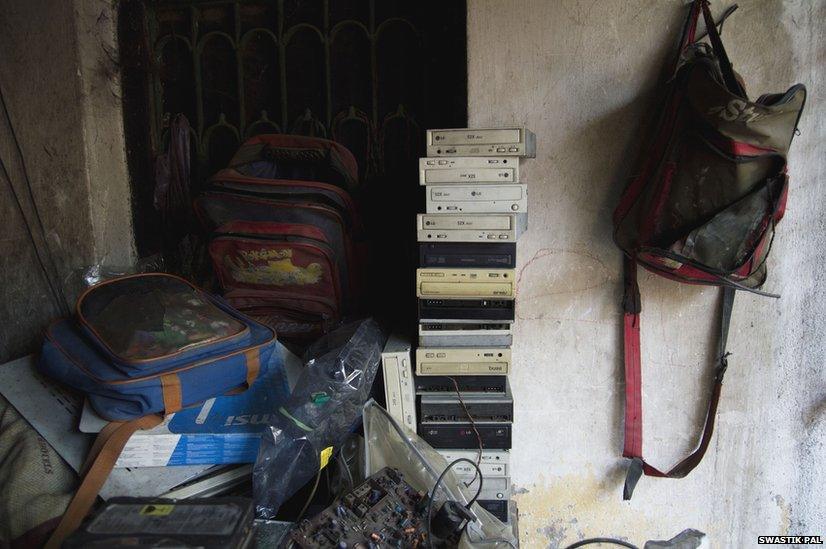
Indians generate 270,000 tonnes of e-waste annually as people upgrade to latest models of television, computer and smartphone, discarding their old products.

Once the e-waste is sorted in Chandni Chowk, a large part of it is sent off to Sangrampur village, 45km (28 miles) south of Calcutta.
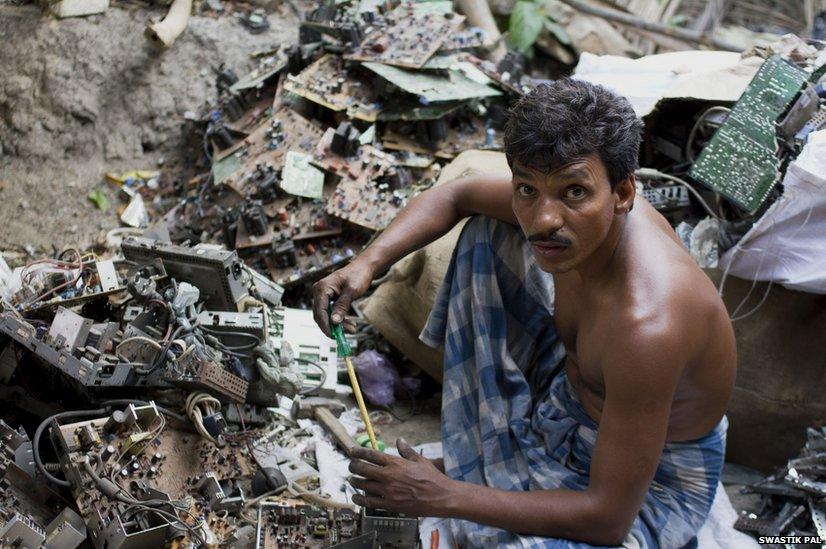
Sangrampur is a leading hub for dismantling e-waste. Practically every home in the village is involved in breaking down discarded television sets, computers and mobile phones.
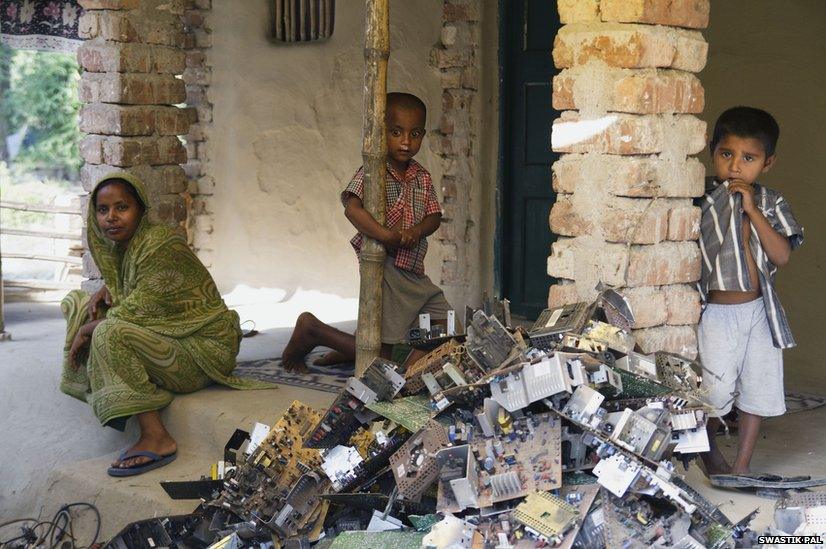
Huge piles of e-waste dumped inside the courtyards of village homes are a common sight in Sangrampur and many here say that life in this village revolves around e-waste.
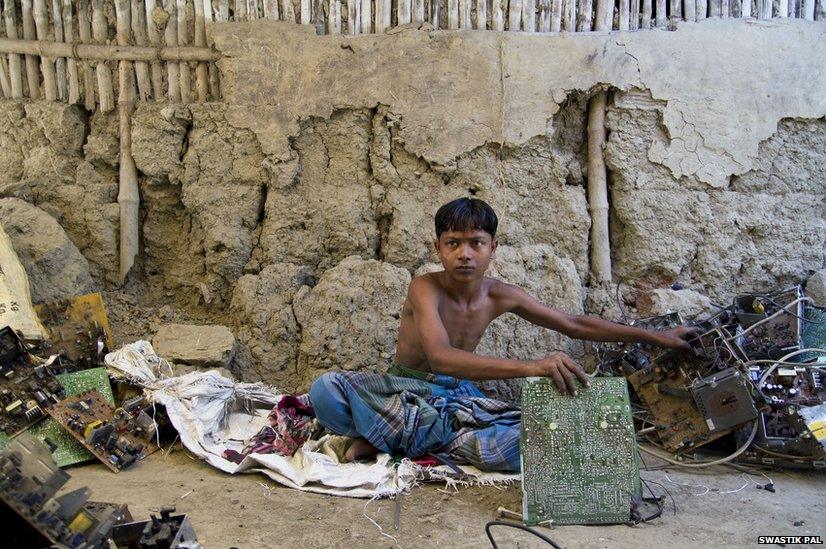
Kochimuni, 15, sits in front of his mud house sorting e-waste. Campaigners say the waste is often toxic and hazardous and poses serious health damages to those involved in sorting it. But low levels of awareness and high profits from almost negligible investments have ensured that more people are constantly joining the work.